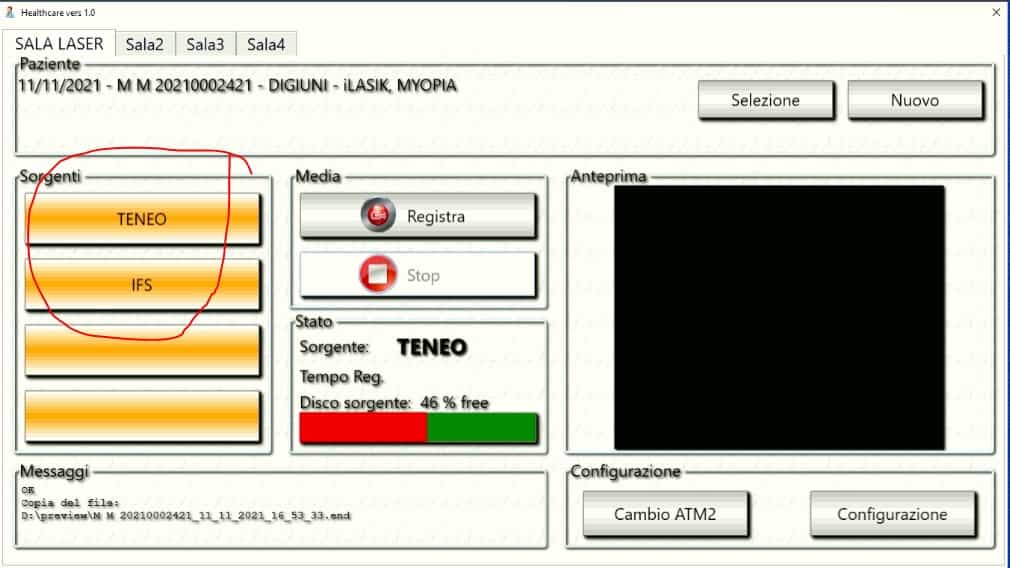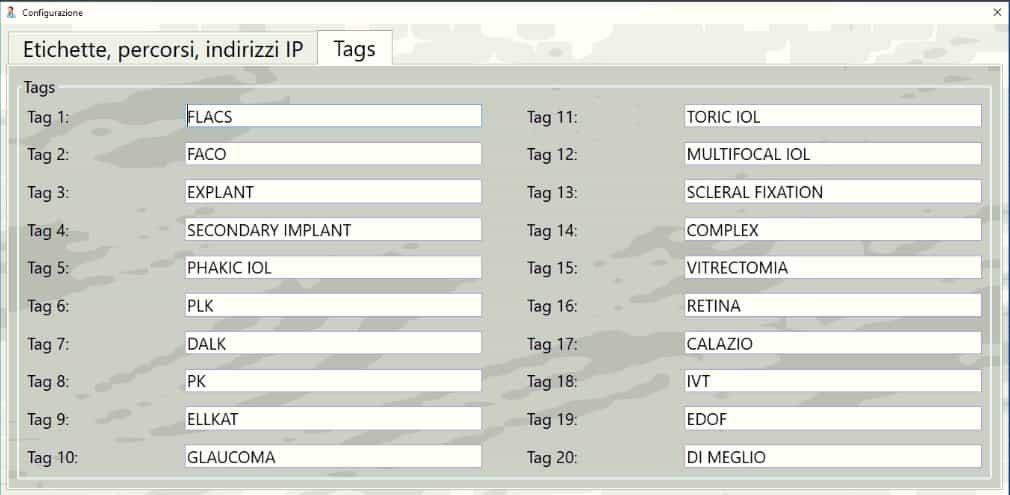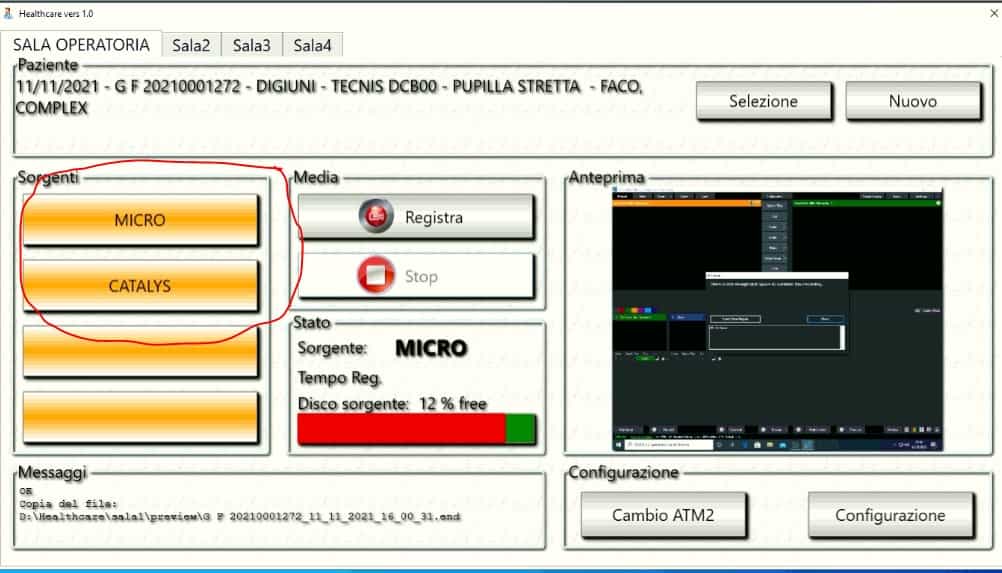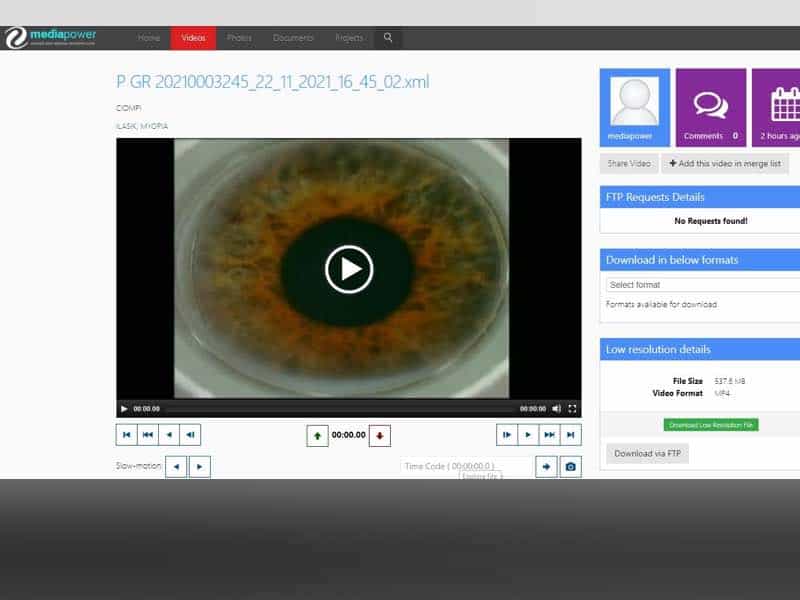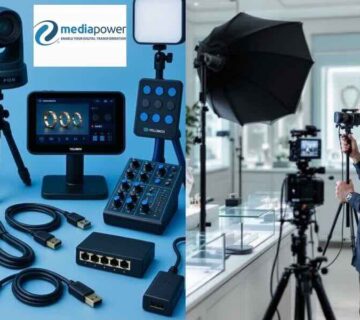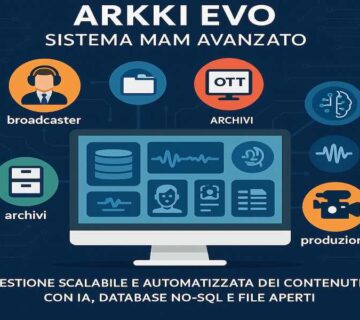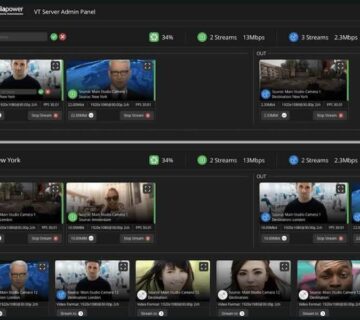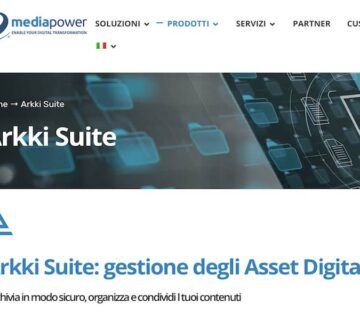Record, store, organize and reuse clinical content thanks to MediaPower.
The team of professionals that make up the Italian company MediaPower was born as an integrator of AV and broadcast systems but has also evolved towards new directions in over thirty years of operation.
While maintaining the historical gap in the primary areas, today it also boasts a solid presence in vertical markets such as Enterprise, Corporate, Educational, Culture and Medical, thanks to an ever-increasing integration of certified IT technologies.
These are rapidly evolving areas where challenges become exciting and the recipe for the success proposed by the company with its heart and headquarters in Genoa, led by Marcello Dellepiane, can count on quality ingredients that intertwine, starting with a team of excellent professionals.
A valid application example in these areas comes from the Medical and ophthalmic company in Milan, Centro Ambrosiano Oftalmico, where four operating theatres have been equipped for some years with MediaPower equipment and systems for filming and managing the assets derived from the various surgical activities.
Luca De Lucchi Sales Manager of MediaPower in the Medical area, says:
“Starting from the concept that specialized equipment for ophthalmology was already present in each room and that all these devices have a video output on various formats, MediaPower created and integrated a complete system that could use them and which is made up of three independent sections :
“SVS2”, or Surgeon Video System, is the part that includes all the V-Mix hardware and software setup that controls the physical inputs and acts as a useful gallery for recording and switching the different video streams, conversions, cables optical fibre connections, the related video switchers, and a touch screen that manages the system from each room.
The other two sections are a redundant local storage system, or media archive, and the heart, a powerful digital asset management software from MediaPower, a proprietary DAM, Digital Asset Management, Arkki.”
The workflow
The first task was therefore to route these video streams over the HDMI cable to special converters which transform these electrical signals into optical ones and send them over the optical fibre connection.
From here the signals flow into a server room – or machine room inside the structure – and in a single rack, they are stored by MediaPower servers.
These streams flow into a central matrix that allows us to route useful signals and decide which ones to record.
Salvatore Ferrandes, room technician of the Ambrosiano Ophthalmic Center who followed the project from the beginning and who physically performs most of these operations, says:
“An operator present in the surgical area like me, but also an assistant, a clinic employee, a secretary and certainly not a dedicated technician, could do it: he can start the recording and select the source used to record the video stream on the server.
In each surgical theatre, using a simple “all in one” touch screen PC on the wall – in practice a remote control panel – we can switch the inputs of the video switcher and check the preview of the various shooting devices, thanks to a user interface which is super simplified.
In each surgical room, there is one or several “devices” capable of taking images of eye operations.
In practice, some micro-cameras are positioned on the typical operating instruments that the surgeon uses on a daily basis.
After selecting the instrument concerned, which becomes the video source for that specific event, a small preview, a screenshot which is updated every two seconds, allows you to be certain that everything is proceeding in the best possible way.
The operator at that point just has to press the “Rec” key to start recording.
He can also carry out a mini-direction by gradually selecting the various sources to be sent to the recording device and, therefore, switching between the inputs of the switcher physically located in the engine room”.
The central DAM
In this phase, the operator is also able to add basic metadata to the file being created, using very simple check boxes (small squares to tick which are also customizable), useful for identifying the event.
Once the registration is complete, it becomes a file stored in the dedicated storage, and from here it is ingested in the proprietary DAM (Digital Asset Management), Arkki.
In this phase known as “Ingest” or “import”, a small XML file is also automatically generated which contains a set of metadata (data describing other data) useful for indicating the type of operation, as initially set.
The file thus becomes a “digital asset” that can be reused for other activities, such as a subsequent distribution or training, locally or remotely.
The native file remains in storage, but Arkki also generates a low-quality proxy file for quick previewing and immediate retrieval of any useful sections.
Arkki is obviously able to upload and organize not only videos but also other types of materials such as pdf files, documents, photographs, and slides and it connects with excellent integration to the pre-existing management database for easy exchange of metadata.
Salvatore Ferrandes resumes:
“Basically, as an operator, I just have to take a few steps, the first is to remote control the video stream from the operating theatres, the second is to archive this video product and organize it within Arkki to be able to find, retrieve, download, re-edit and -distribute in training, in conferences or delivered to suppliers and partners.
After the first period of use, we requested MediaPower the chance to capture and record an audio commentary during the operations.
For this, we have been supplied with 4 radio receivers and 4 tiny collar lavalier wireless microphones.
This allows us to accompany the video recording with a dedicated audio commentary by the surgeon describing the operation as he performs it”.
Outwards
The last section of the system, always controllable from each touchscreen remote control panel, allows you to decide which video input to stream to external channels.
The clinic in question, for example, offers the videos on its Youtube channel, but nothing prevents them from being distributed on other channels or towards customers, partners, suppliers, etc.
In addition to the video input and the surgeon’s audio commentary, it is also possible to connect a handheld camcorder, always managed by an assistant, and integrate it with footage of the surgeon while he performs the operation, switching between the various video sources and also integrating images or content arriving from a PC, for example, some slides of a presentation.
All the videos produced can be viewed live and included in an on-demand catalogue or VideoOnDemand.
“The Arkki central initial database software of this installation, dating back to 2018, has seen several new releases to which many new features have been added, and today it is called “Arkki EVO”.
Among the many innovations introduced, all the audio commentary can be indexed automatically, “speech-to-text” and it is possible to use Artificial Intelligence for automatic indexing of the video.
Other significant and important evolutions involve watermarking, freedom of metadata, automatic management of metadata with customizable field schemes, integration with APIs and third-party features such as Artificial Intelligence, but also much more, all to be discovered.
###
© 2023 MediaPower – presspool.it robertolandini press office


